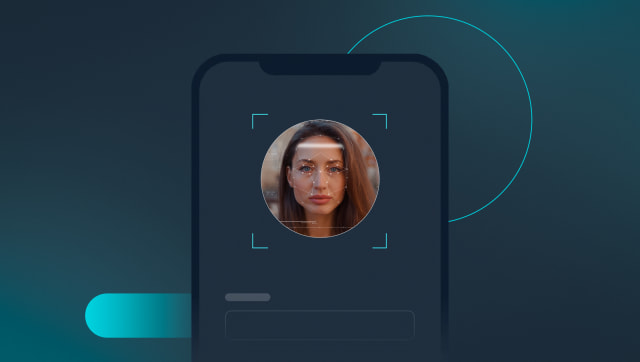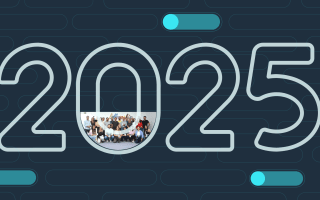
A deep dive into the world of Deepfakes

With the rapid development of technology and the increased use of AI-driven tools to help improve our daily tasks, the ability to create hyper-realistic manipulated videos has exploded. Deepfakes are no longer a distant idea from a science fiction movie; they are a tool that is easily available and accessible to anyone with an Internet connection. This newfound accessibility raises critical questions regarding the security of our identities and the use of technology as an ally, rather than as a tool for spreading misinformation.
What are deepfakes?
Deepfakes are synthetic media produced using Artificial Intelligence (AI) technology to create images, videos, and audio that portray events or statements that never actually occurred. This means that realistic-looking digital images are generated, portraying existing people doing or saying things they never actually did or said, or even fabricating people that don’t exist. These creations are often produced by swapping faces in videos or replicating voices through AI models. The term “deepfake” combines “deep” from AI deep-learning technology and “fake” to signify the content’s artificial nature.
How do deepfakes work?
Deepfakes are created through AI and Deep Learning, specifically through neural networks. These networks are essentially computer programs that mimic the structure and function of the human brain.
Imagine showing a child thousands of pictures of cats. Eventually, they’d become an expert at identifying felines. Deepfakes work in a similar way. Creating a convincing deepfake requires feeding a massive amount of data into the neural network. This data can be images or videos of the target person (the one the scammer wants to manipulate) and another separate source of footage where they want to place the target person.
Deepfakes often use a specific type of neural network called a Generative Adversarial Network (GAN). In this approach, two AI models compete – one generating fake content and the other tries to distinguish it from real content. This competition refines the forgeries over time and trains each other to become more and more realistic.
Another approach uses Variational Autoencoders (VAEs). VAEs learn to compress the data into a simplified form. Imagine being able to adjust the compressed data to turn a frown into a smile. VAEs can then use this manipulated data to alter expressions or swap faces in videos.
So, by training these AI networks on large amounts of data and using intelligent techniques like GANs and VAEs, deepfakes can create incredibly realistic video and audio manipulations. However, it should be noted that the quality of a deepfake can vary depending on the creator’s skill and the available data.
The potential dangers of deepfakes
There are many dangers involving the use of deepfakes, such as:
Misinformation: Deepfakes can be used to spread fake news or propaganda. Imagine a compromising video of a political candidate surfacing right before an election, entirely fabricated by deepfake technology. This situation could decrease trust in the media and democratic processes.
Reputational Damage: Deepfakes can also be used to create fake videos of people doing or saying things they never did. This can be used to damage someone’s reputation, career, or even personal safety.
Cybercrime: Deepfakes can be used to impersonate someone in scams. A deepfake video or audio recording of a CEO could be used to trick employees into authorising fraudulent transactions.
The specific risks of deepfakes for financial institutions
Deepfakes also pose a great threat to financial institutions, potentially causing significant financial losses and reputational damage, such as account takeover and fraud. Deepfakes can be used to impersonate legitimate customers in videos or audio calls. Imagine a fraudster using a customer deepfake to convince the institution’s customer service representative to transfer funds or reset account credentials. This could lead to account takeover and financial losses for both the financial institution and the customer.
How can organisations protect themselves against deepfakes?
Despite their complexity, organisations can protect themselves against possible deepfakes through a series of proactive measures such as:
Training Employees: It’s crucial to equip employees with knowledge about deepfakes. Training sessions can help them identify suspicious characteristics in videos and audio, such as unnatural blinking, inconsistencies in lighting or even strange body language.
Verification Protocols: Clear verification protocols for information and communication are essential. This can involve multi-factor authentication for sensitive actions and encouraging employees to double-check information received through unusual channels.
Deepfake Detection Tools: Several companies are developing deepfake detection software that uses AI to analyse videos and audio for signs of manipulation. Although these detection tools are still under development, they can be a valuable addition to an organisation’s defence.
Digital Watermarking: Embedding digital watermarks into videos and audio can also help trace their origin and identify potential tampering.
Cybersecurity Measures: Implementing robust cybersecurity measures such as strong passwords, access controls and data encryption can make it more difficult for attackers to use deepfakes for cybercrime purposes.
It is important to note that financial institutions need to be particularly alert to this type of threat and consider using technology and tools that can help them identify security breaches and fraudulent actions.
By proactively addressing the deepfake threat, financial institutions and other organisations can protect themselves and their customers from potential harm and mitigate risks associated with this technology.
The implications of deepfakes in the society are yet to be seen in full. They extend to social, moral and political spheres, raising concerns about the credibility of information and how we share it. It is crucial that, as a society, we become more critical consumers of information, verifying content before accepting it as true and using proper tools to protect ourselves and businesses from the false information spread by deepfake technology.
At LOQR, we work proactively to ensure that security takes centre-stage in the development of our Platform to protect our data and the information entrusted to us. Talk to us to know more about our solution.

